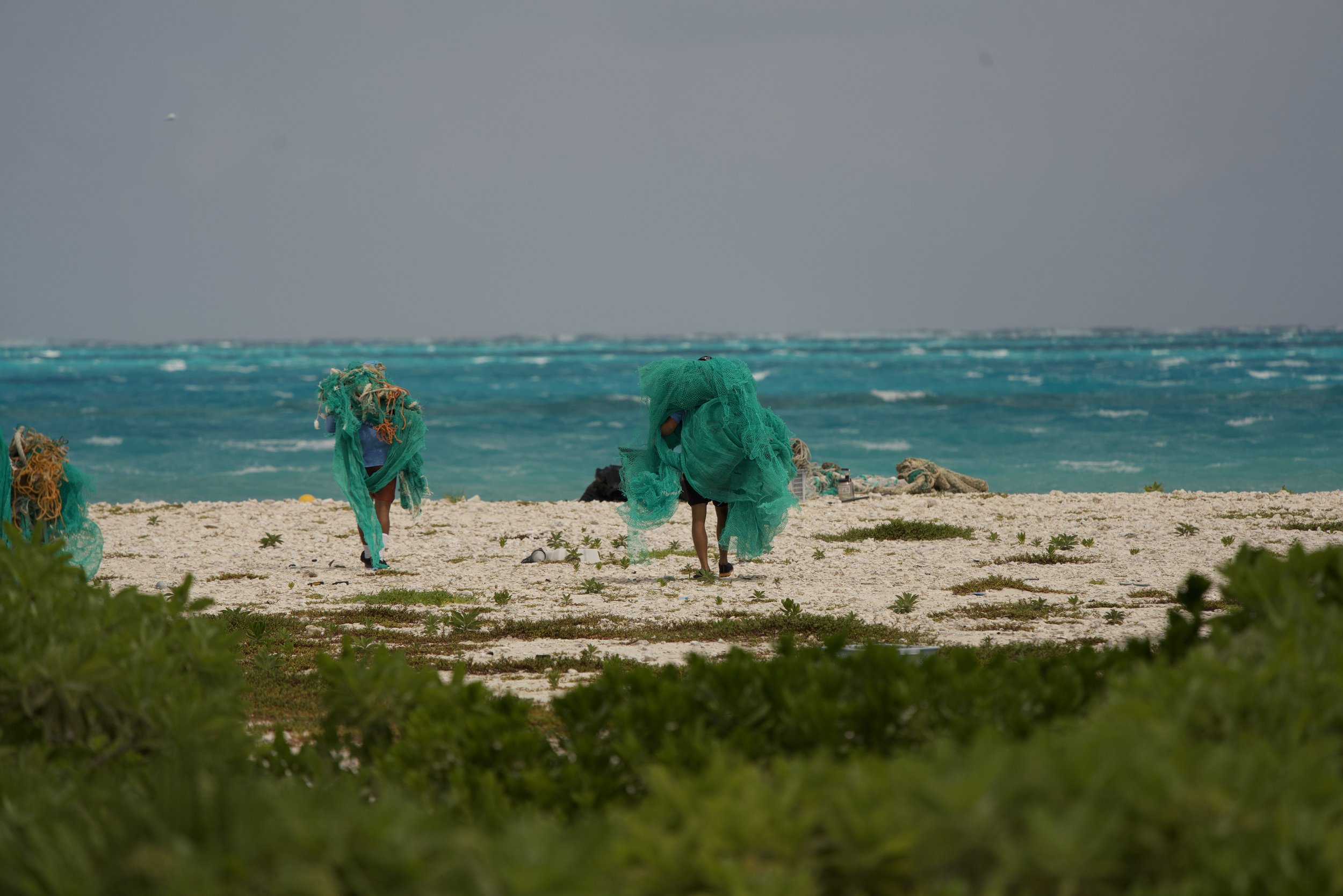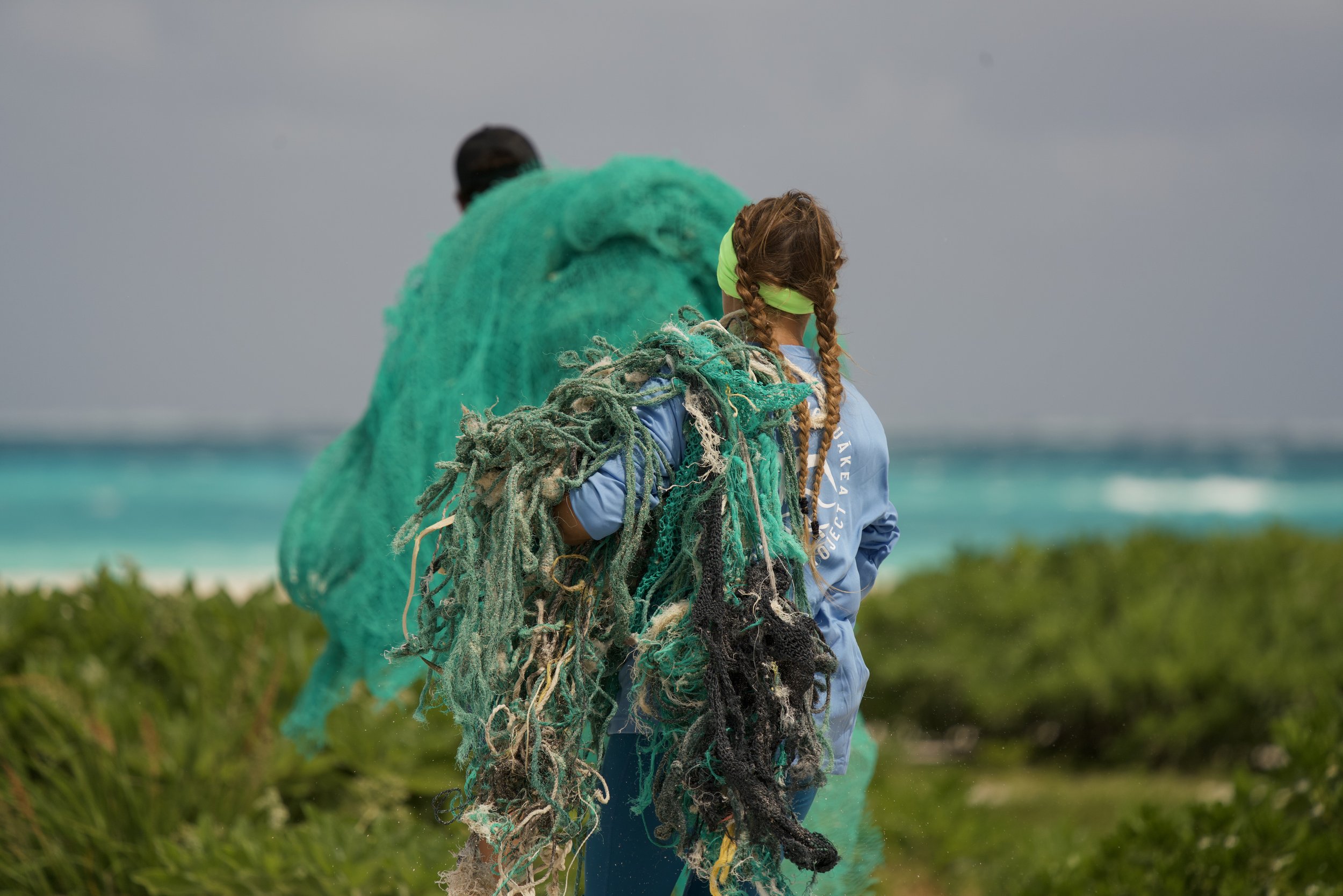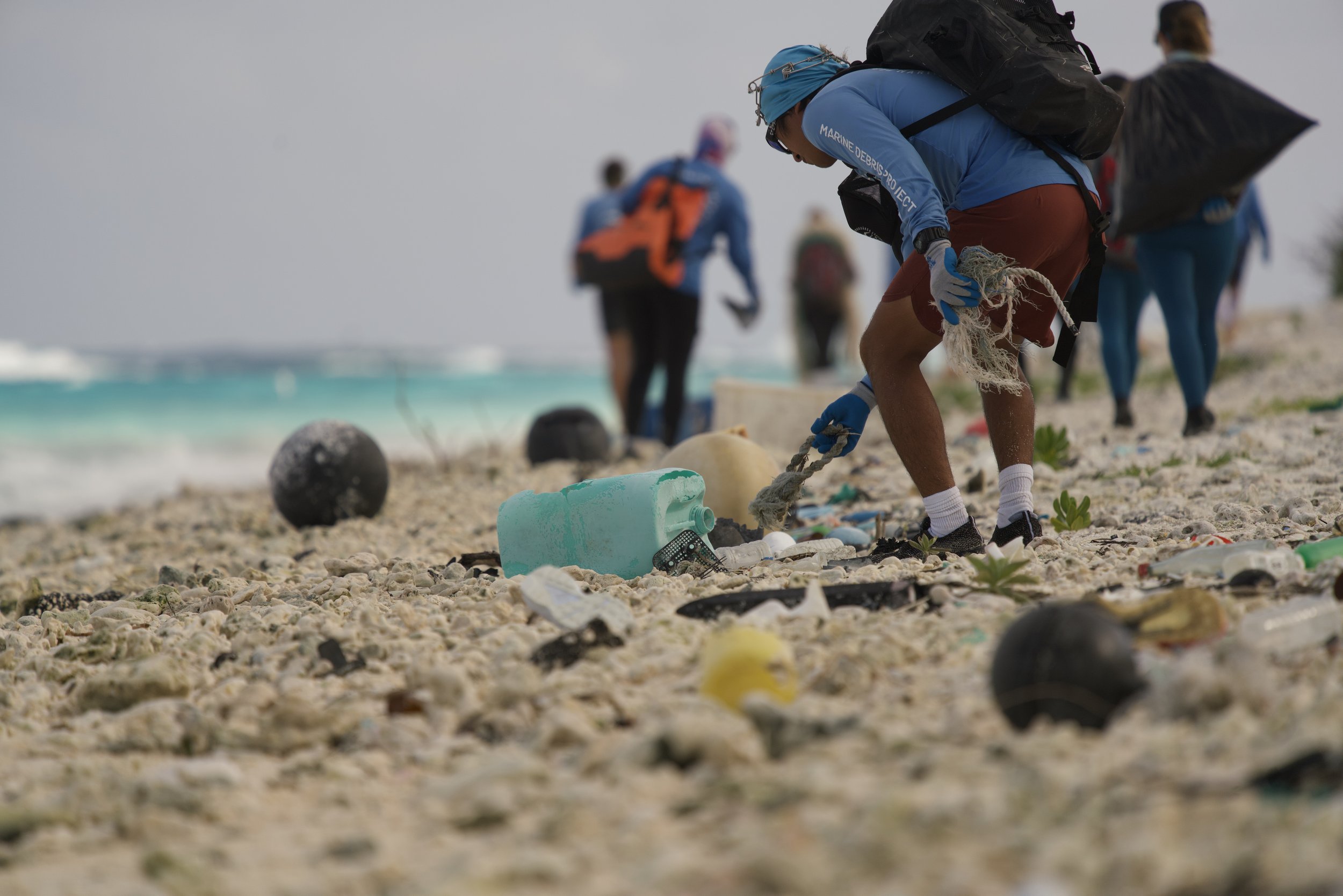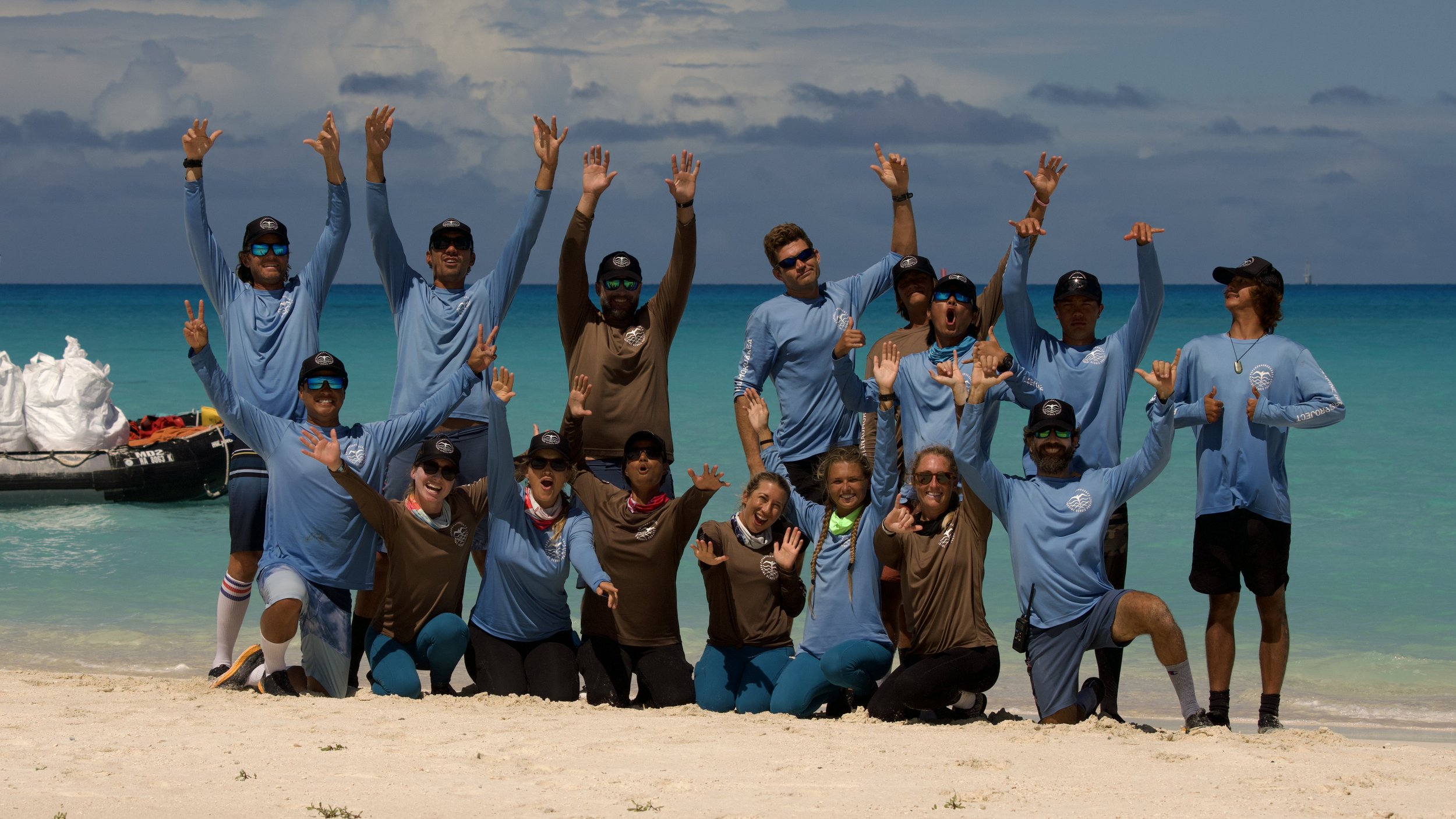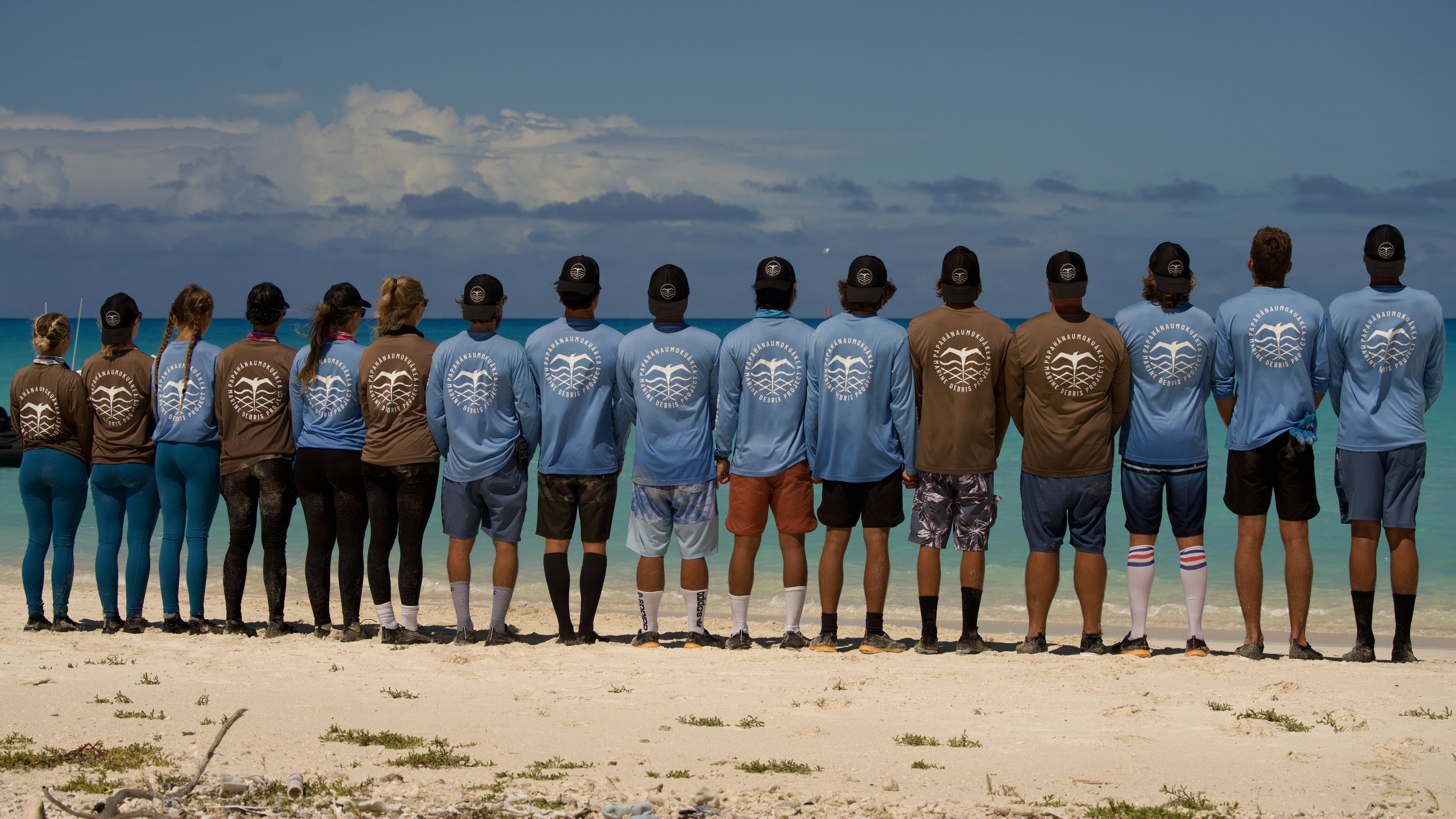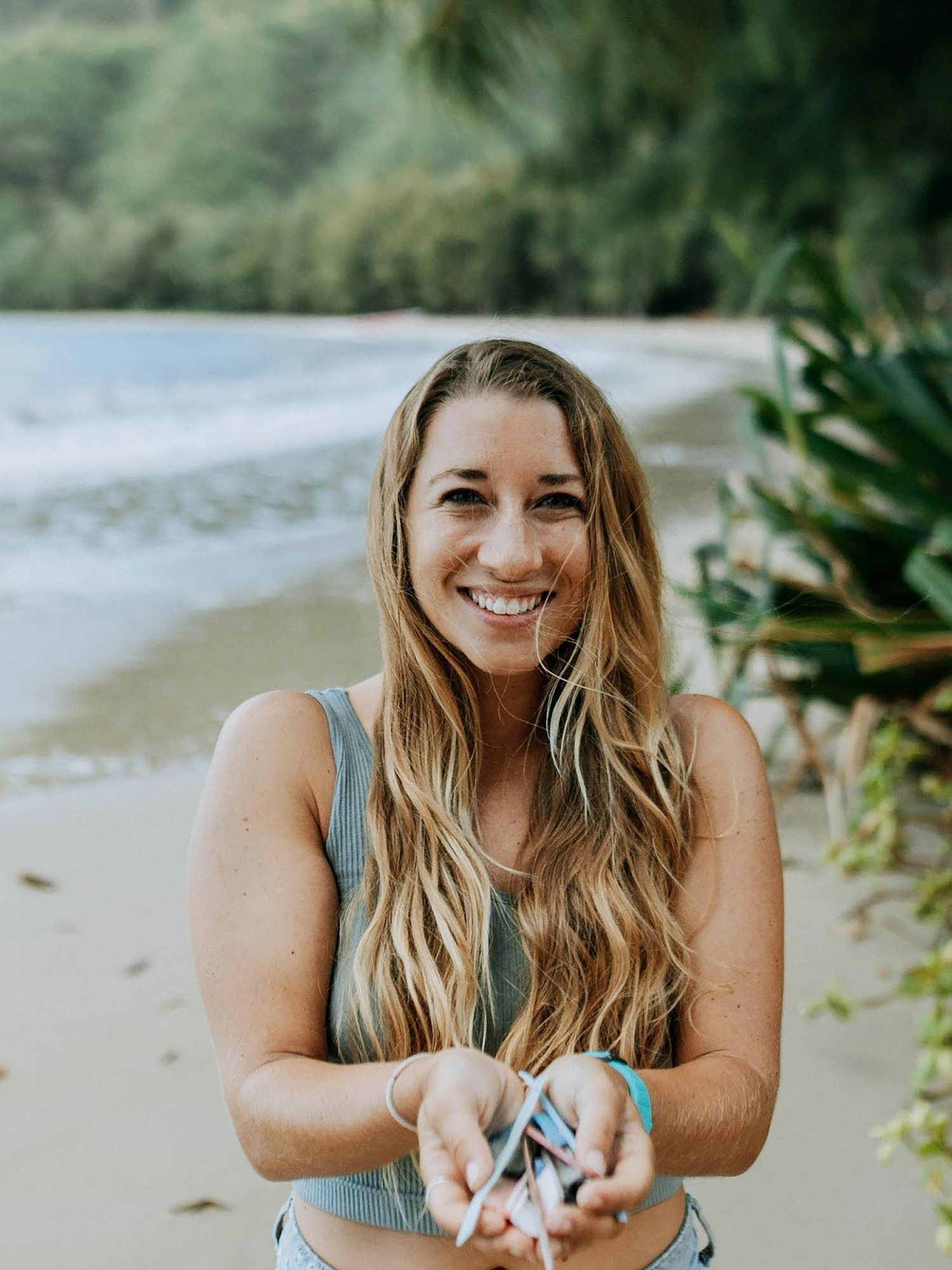Kuaihelani- The "Mecca"
A Blast from the Past
September 25th, 2022
We made it to Kuaihelani!
It is known to many as Midway Atoll, but when I was a kid – an aspiring marine biologist with a passion for cleaning up the ocean - I only knew it as “Trash Island”. It was my absolute dream to go there one day. Kuaihelani is the most widely known atoll with the largest human presence of all the islands in Papahānaumokuākea. Because of that, it has garnered a great deal of attention over the decades due to the massive quantities of plastic debris that constantly litter the shoreline. This is where the infamous photos of albatross carcasses full of plastic were taken. Seeing those images as a child, of thousands of birds and Hawaiian monk seals atop of piles of trash, solidified in my mind that this was the “mecca” of marine debris. And I was finally getting my chance to make the journey there.
If you look past the marine debris, the island is rich with wildlife and famous for it’s massive seabird colonies, including mōlī (Laysan albatross) , manu-o-Kū (white terns), and my personal favorite, nunulu (Bonin petrels). It is home to 'īlioholoikauaua (Hawaiian monk seals) and honu (Hawaiian green sea turtles) and is a precious ecosystem for native plants and coral reefs. It is heart wrenching that a place so beautiful and profuse with biodiversity is heavily impacted by the worst parts of humanity – the biproduct of our waste and convenience-based cultures. But, when wildlife and marine debris meet, you know who to call – the ghostnet busters!
There was a collective feeling amongst our team that this was a special place. As our ship pulled into the dock, Kevin O’Brien, PMDP’s president and a man who has travelled the world, said with a grin, “Welcome to the best place in the world.” Most of us have never been here before so we were sharing the experience together. It is a surreal feeling to arrive on Kuaihelani, a place that has been built up in our heads for so long.
We spent three days here scouring the shorelines to remove debris that has traveled across the world. We targeted ghostnets, which are large conglomerates of abandoned net from industrial fishing industries, that threaten to entangle marine animals. Once we successfully removed those, we moved on to the plastics – buoys, toothbrushes, bottle caps, lighters, children’s helmets, and shoes, so many shoes. We witnessed with our own eyes everything from the photos and headline stories, except there is so much more than what a photo could possibly capture. Our seabird expert and photographer extraordinaire, Andy Sullivan-Haskins, even came across an mōlī carcass that had a COVID-19 medical mask in its stomach – a sad sign of the current times.
As we walked, we could hear the gentle hum of manu-o-Kū hovering softly behind us and see young 'īlioholoikauaua sleeping peacefully in the tideline. We were stoking over the clean left breaks peeling behind the reef – completely empty and untouched surf. Our goal as we surveyed the beaches was to be light on the land. We would avoid the native naupaka and ‘ākulikuli that were thriving, and crouch behind bushes as we quietly passed sleeping seals. We were visitors to this island and wanted to leave no evidence of us being there other than cleaning up the mess that us humans have made. In three days we were able to remove 17,500 lbs of debris!
Our days were long and we worked hard but at the end of each day we got the opportunity to explore everything Kuaihulani has to offer – a true luxury for our team who has been living at sea. Kuaihelani has approximately 50 residents, including biologists, firemen, and maintenance workers. There is infrastructure from the U.S. Navyʻs operations in the 1940s that is still intact and operable, albeit archaic in the best way possible. While there are dirt roads, there are no cars on the island so the main mode of transportation is bicycles. When we stepped off the ship, the residents had kindly stacked 16 shiny bicycles for us to go explore. We got to buy t-shirts from the little general store, jump off the pier (a rite of passage on the island), and play games in the coolest bowling alley Iʻve seen in my life! This was not your typical bowling alley – it was built in the 1970s and served as a genuine blast from the past with paper score cards, antiquated vintage shoes, and two men behind the scenes physically working the mechanics of the lanes. Everything felt unchanged by time. This was a gathering place for the residents and an exciting time for us to all meet and relish in each otherʻs adventures. Life on the island is simple and beautiful. The people are kind and welcoming and the town is small but has all you would ever need.
On our last evening, Charlotte, Nāmele, Max, Kama, Kala’i, and I biked around aimlessly just to see as much of the island as possible. The sun was setting as we cruised down the dirt path through a forest, past World World II bunkers, and across fields of seabird burrows to our left and right. I couldnʻt help but laugh – this must be what heaven feels like.
We made it to the ship and said a sad goodbye to the island. Residents came to the dock to see us off. As the ship sailed west into the sunset, we were gifted with a large rainbow and a sky full of Bonin petrels to escort us out. It was an incredible honor and privilege to spend time here cleaning the beaches to help conserve the island.
Meet the Author
Lauren Chamberlain
